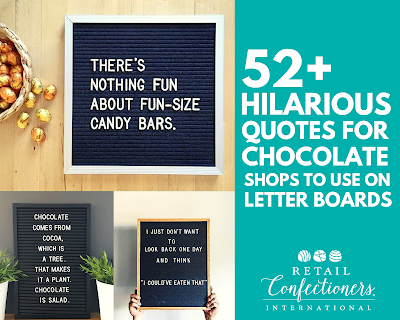
You do it every day. When
you see your co-workers on Monday morning, at dinner on Friday night, even when
you're trying to convince your kids that green beans are good for them.
You
tell stories to make your case and to make connections. That's what we do as
human beings. In fact, we're hardwired for it.
If
storytelling comes naturally to us, then it seems natural that we would use
this skill in business—to attract customers, persuade partners and rally
employees.
Here
are a few key points to keep in mind as you build your storytelling skills from
Jill Pollack of StoryStudio Chicago, keynote speaker at RCI’s Annual Convention
& Industry Expo in Chicago. To be persuasive and productive, the stories we
tell at work need to be built with attention paid to: emotion, craft and
action.
Emotion
No
one needs to tell you that most of our decisions—whether in business or in
life—are pushed along by our emotions. They also help us feel engaged in a story
or a transaction. But how do you find and engage the right emotions?
Entrepreneurs
can learn from fiction writers who have long known that the success of a story
rests in finding "the significant details,” as Eudora Welty once wrote. In
good stories, it's the details that captivate us, that allow us to
"see" the story, and that invite the reader to get involved in the
conversation.
If
you write about your first bicycle as yellow with training wheels, that's not
much to go on. But if you explain that your first bike was built by the boy
down the street who added training wheels and streamers, and then jogged down
the sidewalk with you, holding the banana seat with one hand while you learned
how to pedal...now the reader has enough details to "see" the image. The
reader is involved in your story, probably even starting to think about when they
learned to ride a bike.
In
business, the same is true. Just as you focus on the details of your
ingredients and processes, attending to the details in your marketing—even if
you're just greeting someone who has walked into your store—can mean the
difference between a customer who feels unwanted and one who feels like they
are now a participant in the “conversation.”
Even
if you're not in full story mode, using clear details in your conversations
will guarantee you a better relationship.
Craft
Even
though we are all able to toss out a great story in the middle of a cocktail
party, the stories you use at work should be crafted. Just like a house is
built with bricks or wooden beams, stories are built on details and images and
rhythm and voice, and so much more. Key among these craft elements is the idea of
tension and conflict.
While
most of us don't like conflict in our lives, we must have it in our stories.
Think about it this way: in a story, tension and conflict can be either a
threat or an opportunity.
In
business we usually refer to this as creating a sense of urgency. "If you
pay now you can save ten percent." That's the opportunity. The threat:
"If you don't pay now, you'll be charged an additional ten percent."
In
stories, this concept works in a slightly different way. We create tension by
sharing obstacles that may have been in our path. For instance, your signature
chocolate relies on cocoa nibs from Ghana. But your sources have dried up and
now you have to find the right quality beans somewhere else. And, you had to
beat your competitors to them. We like our stories to have heroes. Overcoming
obstacles, big or small, makes you a hero.
Action
Every
story is persuasive in some way. Opinion pieces in the newspaper try to convince
you to see the news the way the writer does. Novels and movies persuade us that
this fictional world is real. Advertisers know they are not selling soap; they
are selling us the idea that if we use this soap, we will be beautiful.
To
be persuasive, stories need to have a solid structure and a clear call to action.
We must want our audience to do something. Imagine this: you spend 15 minutes explaining
the process of developing a new, unique flavor profile and tell the story of
how you stumbled on to it after you thought you were creating something else.
Then you say, "let me know if I can help you find something,” and you walk
back behind the counter.
Even
if the consumer found the story intriguing and would like to taste this new
flavor, if you don't ask them to try a sample or buy some for dessert this
evening. They will likely reply, “that's interesting,” and move on.
Now,
imagine this: you stand in front of a consumer with two trays and ask them to
choose which one they think is the enhanced flavor. Right away you have gotten the
consumer involved in this story. After pointing to the tray in your left hand,
you say, “Right! Take a taste and let me tell you how we stumbled upon this
extraordinary new flavor. We were in the back room on a cold and snowy Saturday
morning…”
Now
you have made them a part of your story and because you asked a question, they
are immediately involved in the conversation. When they serve the candy at their
next dinner party, they will tell their guests your story, and then these new
people will become a part of that story. And on and on and on.
You
can see how powerful this can be.
What stories should you
tell?
There's
a good chance you are not at a loss for personal stories, but in business we
want to make sure the stories we craft will support a sales or relationship
building goal. Here are just a few ideas for where to find good stories:
1.Why
you got started in this business.
2.Why
you stay in this business.
3.
How you source your ingredients and materials.
4.What
makes you different.
5.What
suppliers you work with and why.
The
next time you start telling a story, stop for a moment and realize you are building
a chain of connections that have the potential to reach far and wide.
Crave
more? If
you like what you read here, look for the "Subscribe
now" box on the right to enter your email address and start
receiving weekly tips, like this, delivered straight to your email inbox. RCI's
Tip of the Week blog is just one of the many resources we offer to help candy
makers refine their craft and build upon their business and marketing
practices. Follow
us on Facebook for
even more sweet inspiration.
Not a
member? Click
here to learn how RCI can help you build your sweet business.
































